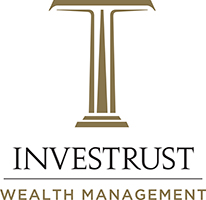In an ideal world, your retirement would be timed perfectly. You would be ready to leave the workforce, your debt would be paid off, and your nest egg would be large enough to provide a comfortable retirement–with some left over to leave a legacy for your heirs.
Unfortunately, this is not a perfect world, and events can take you by surprise. In a survey conducted by the Employee Benefit Research Institute, only 44% of current retirees said they retired when they had planned; 46% retired earlier, many for reasons beyond their control.1 But even if you retire on schedule and have other pieces of the retirement puzzle in place, you cannot predict the stock market. What if you retire during a market downturn?
Sequencing risk
The risk of experiencing poor investment performance at the wrong time is called sequencing risk or sequence of returns risk. All investments are subject to market fluctuation, risk, and loss of principal–and you can expect the market to rise and fall throughout your retirement. However, market losses on the front end of your retirement could have an outsized effect on the income you might receive from your portfolio.
If the market drops sharply before your planned retirement date, you may have to decide between retiring with a smaller portfolio or working longer to rebuild your assets. If a big drop comes early in retirement, you may have to sell investments during the downswing, depleting assets more quickly than if you had waited and reducing your portfolio’s potential to benefit when the market turns upward.
Dividing your portfolio
One strategy that may help address sequencing risk is to allocate your portfolio into three different buckets that reflect the needs, risk level, and growth potential of three retirement phases.
Short-term (first 2 to 3 years): Assets such as cash and cash alternatives that you could draw on regardless of market conditions.
Mid-term (3 to 10 years in the future): Mostly fixed-income securities that may have moderate growth potential with low or moderate volatility. You might also have some equities in this bucket.
Long-term (more than 10 years in the future): Primarily growth-oriented investments such as stocks that might be more volatile but have higher growth potential over the long term.
Throughout your retirement, you can periodically move assets from the long-term bucket to the other two buckets so you continue to have short-term and mid-term funds available. This enables you to take a more strategic approach in choosing appropriate times to buy or sell assets. Although you will always need assets in the short-term bucket, you can monitor performance in your mid-term and long-term buckets and shift assets based on changing circumstances and longer-term market cycles.
If this strategy appeals to you, consider restructuring your portfolio before you retire so you can choose appropriate times to adjust your investments.
Determining withdrawals
The three-part allocation strategy may help mitigate the effects of a down market by spreading risk over a longer period of time, but it does not help determine how much to withdraw from your savings each year. The amount you withdraw will directly affect how long your savings might last under any market conditions, but it is especially critical in volatile markets.
One common rule of thumb is the so-called 4% rule. According to this strategy, you initially withdraw 4% of your portfolio, increasing the amount annually to account for inflation. Some experts consider this approach to be too aggressive–you might withdraw less depending on your personal situation and market performance, or more if you receive large market gains.
Another strategy, sometimes called the endowment method, automatically adjusts for market performance. Like the 4% rule, the endowment method begins with an initial withdrawal of a fixed percentage, typically 3% to 5%. In subsequent years, the same fixed percentage is applied to the remaining assets, so the actual withdrawal amount may go up or down depending on previous withdrawals and market performance.
A modified endowment method applies a ceiling and/or a floor to the change in your withdrawal amount. You still base your withdrawals on a fixed percentage of the remaining assets, but you limit any increase or decrease from the prior year’s withdrawal amount. This could help prevent you from withdrawing too much after a good market year, while maintaining a relatively steady income after a down market year.
1Employee Benefit Research Institute, “2016 Retirement Confidence Survey”
Prepared by Broadridge Investor Communication Solutions, Inc. Copyright 2016
